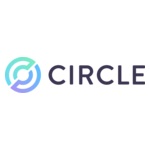New Year’s resolutions
I have historically worked with very large banks.

Happy new year, my tribe. Go out there and do good.
Some of the largest banks in the world were my employers. The rest (or near enough) were my clients. If I had a bingo card featuring every huge bank, ticking off the ones I have worked for or with, I would be winning.
Exactly what I would be winning is a moot point, but the point I am trying to make is: I know big banks. I understand their challenges and I know their habits.
What I hadn’t realised is how conditioned I have become to thinking of the world in sizes that suit those challenges and habits.
Budgets. Costs. Employee base. Shares of wallet and market penetration.
What success or failure looks like for those organisations is… big. A few thousand or even tens of thousands of dollars here and there is a rounding error for these places. One that, from an accounting perspective, you need to log, but I recall my boss once determining that delayed interest claims of under a couple thousand dollars were not worth sending a collections team after. These were institutional clients making us millions elsewhere. The cost of the team ringing around to settle a missed interest payment of a few hundred bucks? Not worth it, he said.
It was worth it to the collections team, incidentally.
The team were all like, ‘If he doesn’t want the money, can I go after it and, if I get it, keep it? Because $2,000 is nothing to this bank, but it’s a lot to me, thank you very much.’
If you have worked with a big bank, you will recognise this.
And you will also understand what I mean when I say that, the first time I spoke to a credit union serving 500 members, my brain didn’t know what to do with that information.
It had never occurred to me that, when we speak of community-centred service, we actually meant it to such an extent.
Credit unions are not all small, and if you live in Canada, the US or Ireland, you are used to credit unions that rival mid-sized banks in size and reach. They are still community-centred. They still service specific communities such as firemen or service personnel, police or nurses. Or local communities.
And regardless of their size, they will most probably know your name when you walk in and ask after your parents or your child.
And some of them, in the UK at least, can occasionally be very, very small. But no less effective for it.
So… you have 500 members… I asked the CEO of one such credit union trying to wrap my head around the mechanics of it… the mathematics of it, frankly.
500 members… that’s not a lot, considering that credit unions aren’t really deposit-takers from a balance sheet perspective. They take deposits, of course, that’s how you become a member. But they don’t give interest, and although you can get dividends (and do… so go join a credit union), they don’t work their balance sheet the way a traditional bank does.
As a result, they operate lean and close to the wire pretty often.
So you have 500 members… and you lend to folks who need to make it to the end of the month. Lost shifts… an unexpected repair… family trouble.
Many mundane things can push you over the edge if you are operating close to it.
So what do you do, I asked, if someone walks in through your door who needs your help and, given your size, you can’t help because you have leveraged all your capital already: you have lent it all out to other people who needed it as much?
We borrow from each other, came the answer, without missing a beat.
That is normal to them.
It is not normal to me. Not in the way they do it. Because this isn’t a big corporate syndicated loan at an exorbitant interest rate. This is a ‘help a brother out’ mindset between organisations who share a mission.
And it is common. Very common. For credit unions to help each other help their members.
I had to do a vigorous throat-clearing, something in my eye, oh it’s hot in here routine.
But I had a tear in my eye, make no mistake.
They borrow from each other, the credit unions do. To look after those who need help. To protect them from payday lenders and loan sharks. And buy now, pay later (BNPL).
I have been thinking about this conversation a lot during the Christmas period as the airwaves were filled with adverts offering BNPL payment schemes for gifts and festive food, for drinks and toys. Advertising effectively unregulated, unsecured loans like they were free money.
And although the airwaves were also replete with reports on the creeping levels of debt the BNPL epidemic has brought in its wake the world over, somehow the two didn’t balance out.
Citizens Advice in the UK has found that more than one in four UK adults (the equivalent of over 15 million people) are likely to use BNPL to help with festive spending. That rises to 56% if you are a parent of primary school-aged children.
The charity’s research also found people are struggling to cover the cost of essentials (such as groceries and bills) and resorting to BNPL to cope with the cost-of-living crisis. 11% of BNPL users in the UK use the product to buy groceries.
Although the government made noises about regulating BNPL in 2021, efforts have stalled, and while life is getting more and more expensive, BNPL becomes the last resort of the desperate, as it does not require affordability checks unlike all other credit options.
The implications are exactly what you are thinking.
One in five users in the UK have missed a payment or incurred late fees in the last 12 months. One in 10 of those were visited by an enforcement agent.
Almost a third of all users borrowed money from elsewhere to meet their payments. So they incurred debt to pay their debt.
In the US, all of the above patterns apply, and yet the situation is even more pressing, as the number of users who carry debt from BNPL usage is more than double the UK number at a whopping 41%.
So, as the new year dawns, I ask you this: What good are our innovations and creative business models if they lock people into debt? What good are our digital riches if we fail to protect those we allegedly do things for?
Another year has started. And as all the predictions said, we will spend a lot of it speaking about GenAI. And that is fine. But we should spend a lot of it speaking about debt, too. And what we are doing with all our knowledge and all our insight to help people for whom the days are hard, even though they are holding down a job and doing everything within their gift to keep their head above water.
We are uniquely placed, my tribe, to influence the application of technology and maturation of regulation. Let’s remember that influence and reach and not just speak of the shiny things. Let’s support those who need us and the businesses and organisations who support them.
Happy new year, my tribe.
Go out there and do good.
#LedaWrites
 Leda Glyptis is FinTech Futures’ resident thought provocateur – she leads, writes on, lives and breathes transformation and digital disruption.
Leda Glyptis is FinTech Futures’ resident thought provocateur – she leads, writes on, lives and breathes transformation and digital disruption.
She is a recovering banker, lapsed academic and long-term resident of the banking ecosystem.
Leda is also a published author – her first book, Bankers Like Us: Dispatches from an Industry in Transition, is available to order here.
All opinions are her own. You can’t have them – but you are welcome to debate and comment!
Follow Leda on X @LedaGlyptis and LinkedIn.











































